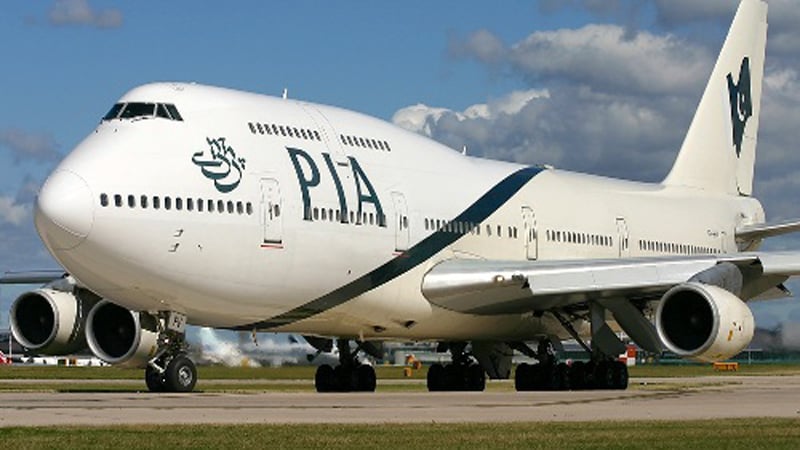PIA – Revive or Privatize?

Pakistan International Airlines (PIA) today stands as a textbook case of organizational failure. Once the pride of Pakistan and a pioneer in the region, it is now bleeding, drowned in inefficiency, and makes headlines only for mismanagement. Owing to its failure as an organization, various governments in Pakistan have planned and attempted to privatize it in different time frames, but failed. As PIA was always considered to be the top choice for privatization among a few state-owned enterprises, hence no worthwhile effort was made to improve it over time, and the plunge became deeper. The push by various governments to privatize PIA, is, in effect, a national admission of surrender: an acceptance that the state is incapable of enforcing basic governance, efficiency, and accountability within its own enterprise. If the issues are looked straight into and given a genuine attempt to resolve, there is no reason why PIA cannot stand tall again as a state-owned carrier just as many others around the world continue to do. What is genuinely needed, in fact, is the will to make PIA better.
PIA was once counted among the world’s finest airlines. In its golden era, it opened routes to China, was the first airline is South Asia to operate jet passenger aircraft, help train and build Emirates airline and set service standards across Asia. Its proud slogan — “Great People to Fly With” — was not just marketing fluff but a reflection of lived experience. The airline also built formidable engineering and service infrastructure and earned global respect for safety and professionalism. PIA seen in its current state is not that it lacks capacity or capability. What it has lost is good governance.
The notion that public ownership is inevitably a recipe for failure is fundamentally disproven by the world’s most successful airlines. Qatar Airways, Emirates, Singapore Airlines, Turkish Airlines, Ethiopian Airlines, and Air China dominate the skies today. None of them are private. All are either fully government-owned or the government has majority stakes ensuring strategic decision-making leverage. Qatar Airways recently posted a record USD 2.15 billion profit. Singapore Airlines’ net profit doubled last year. Turkish Airlines reported USD 19.7 billion in revenues and USD 2.8 billion in profits in 2023. Ethiopian Airlines, entirely state-owned, recorded USD 7.6 billion in revenues in 2025 while carrying 19 million passengers. These examples ruin the myth that state ownership is synonymous with failure. What separates these airlines from PIA is not ownership but professionalism, vision, and political will.
So why has PIA failed? The answers are painfully obvious; inefficiency, bad governance, operational flaws and questionable safety. It has one of the world’s highest staff-to-aircraft ratio and operates an aging and inefficient fleet marred by low reliability and chronic operational inefficiencies. Political interference slices through good governance, political appointments abuse merit, perpetual leadership changes and short-term firefighting is followed instead of pursuing a well articulated strategy. Worse still, politicization within the ranks has hollowed out professionalism. Unions and associations, backed by political parties, routinely block reforms to protect inefficiency and resist restructuring, even when it drags the airline deeper into debt. Add to this the absence of accountability where mismanagement, corruption, and misuse go unpunished. Recruitment scandals highlighting politically motivated hirings to employees with fake degrees have shredded meritocracy. Meanwhile, whatever earnings PIA makes are swallowed up by debt servicing. It is a vicious cycle, and instead of fixing it, privatization is being dressed up as the easy way out. The successive governments considered it a burden and opted to offload it, rather than considering it a priceless asset, which needed focus and honest efforts for revival.
Examples in aviation across the globe have proven that if the efforts are pursued with right intent and veritable governmental support, the revival is possible. Turkish Airlines, under Dr. Temel Kotil (CEO 2005–2016), is a case in point. In 2005, it carried just 14 million passengers, flew 83 aircraft, and served 107 destinations. By 2024, those figures had soared to 83 million passengers, nearly 387 aircraft, and over 350 destinations across 131 countries. Istanbul is now one of the busiest aviation hubs in the world.
Ethiopian Airlines tells a similar story. Under Girma Wake (2004–2010) and Tewolde GebreMariam (2011–2022), the airline grew from carrying 1.5 million passengers and serving 28 destinations in Africa to flying to 135 destinations worldwide, operating 156 aircraft, and carrying nearly 19 million passengers annually. Revenues now top USD 7.6 billion. These transformations of Turkish and Ethiopian airlines prove that correct vision and strategy pursued with professionalism can turn the tables on failing organizations.
Another cornerstone of the thriving airlines’ is their Maintenance, Repair, and Overhaul (MRO) divisions. Turkish Technic, Ethiopian’s MRO, Emirates Engineering, and Qatar Airways Engineering service have internationally certified MROs providing services to a range of aircraft and support third parties in addition to own airlines. These MROs make billions in annual revenues. Here too, PIA has a capability it has failed to capitalize upon. The Ispahani hangar, engine shops, and component facilities exist, as does a technically trained workforce. This has been a working MRO but over a period of time due to neglect, lack of resources and attention has lost its certifications and has almost become dormant. It needs to be restructured, upgraded and recertified. With these steps, PIA’s MRO could cut its own costs and attract lucrative third-party contracts. The manner in which air travel is increasing; there is going to be an enormous increase in MRO requirements in coming years. PIA can capitalize on this opportunity. Unlike fleet replacement, MRO revival can yield quick wins, turning an underused facility into a profit center almost immediately.
Yet technical fixes alone won’t rescue PIA. Internal restructuring is critical. The airline is drowning in overstaffing, and any attempt at rationalization is stymied by unions more loyal to political patrons than to the company’s survival. Unless unions’ influence is brought under a framework of accountability, reforms will remain hostage to vested interests. PIA need to reorganize internally, empower professionals, and adopt corporate governance practices.
But here is the hard truth: revival under the current political and legal framework will not work. PIA is too tangled in bureaucracy and political interference to be fixed through routine reforms. It must be treated as a special case. This means targeted legislation to grant management real autonomy, free from political pressure and procedural impediments. Only with clear goals, measurable performance benchmarks, strict accountability and unwavering government support can revival efforts succeed.
Capital is also crucial. With most earnings wiped out by debt servicing, PIA needs fresh investment. But the answer is not wholesale privatization. Instead, Pakistan should pursue smart asset monetization and conditional government support. Non-core assets like the Roosevelt Hotel in New York, valued at around USD 1 billion in redevelopment potential, can be leveraged to raise capital for fleet renewal, system upgrades, and MRO modernization. Debt restructuring, similar to what the government has undertaken in the energy sector, could also give PIA breathing room to rebuild. Support, however, must be conditional — released in tranches and tied to strict performance audits.
Privatization may look tempting, but it risks undervaluing national assets, compromising sovereignty, and abandoning essential connectivity to regions, where the private airlines do not operate. A national carrier is also very crucial for air mobility during crises. Revival under public ownership, on the other hand, is not just possible, it is proven time and again, by global examples.
A Roadmap for Revival
The following is suggested to undertake revival of PIA:
Leadership and Governance: Install a professional board and management team, legally insulated from political interference. Provide continuity to the Leadership which should work on SMART (Specific, Measurable, Achievable, Relevant, Time-bound) goals. It should be backed by government support and strict accountability.
Organizational and Workforce Restructuring: Carry out complete analysis for organizational restructuring keeping efficiency and performance as top priorities. Harness the unions’ overreach through legislation and these be barred from causing impediments or interference in revival efforts.
Assets Monetization and Support: Muster financial support by monetizing assets through redevelopment, restructuring the debt for a limited period and support by the government tied to clear performance milestones.
MRO Transformation: Modernize and certify PIA’s existing MRO facilities to cut internal costs and capture third-party contracts in a rapidly growing global market.
Fleet Renewal and Service Reliability: Operational efficiency be increased by improving reliability through pro-active fleet maintenance management and availability of required support through Just-In-Time (JIT) logistic patterns. Remove administrative impediments to restore punctuality and passenger trust.
PIA’s decline is not irreversible. If Pakistan can insulate it from politics, empower professional managers, legislate special provisions for unhindered reforms, monetize wisely, and unlock the potential of its MRO, PIA can once again lift Pakistan’s image across the skies.
PIA’s survival is not a question of possibility, but of will. If we fail to save our national carrier, we will have conceded that incompetence and political expediency are stronger than national resolve. Privatization of PIA doesn’t offer a solution; it provides an escape. If we cannot show the resolve to rescue our own national asset, we clearly show to the world and ourselves that Pakistan has surrendered to decay.


